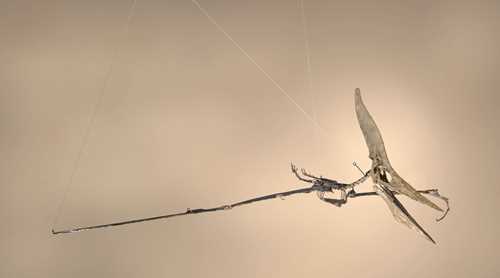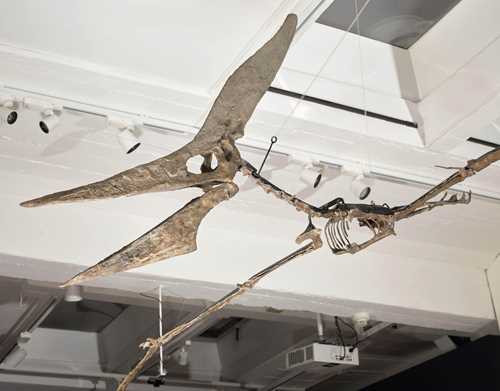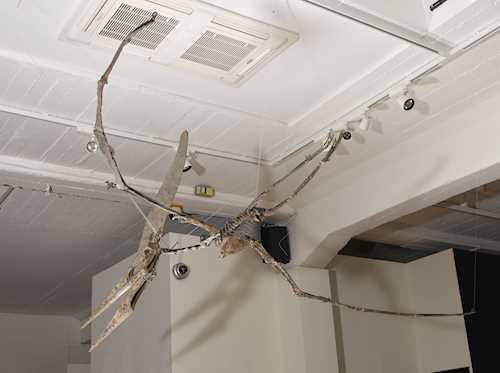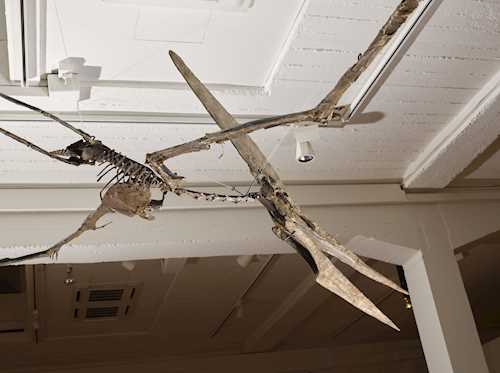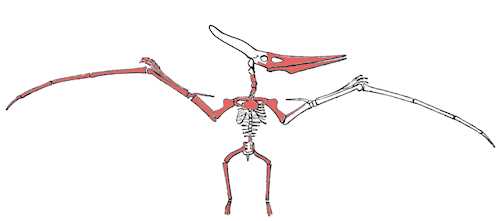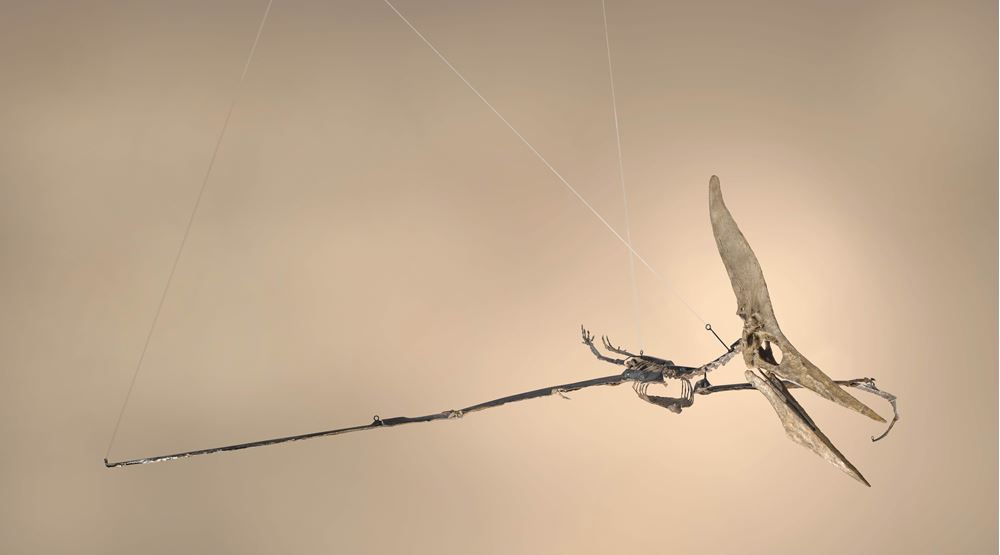
Lot 1881* - S17 Out of This World - Tuesday, 28. June 2022, 04.00 PM
PTERANODON LONGICEPS FULL SKELETON IN FLYING POSITION
Upper Cretaceous, around 70-85 million years
Wingspan: 302 cm
Length of skull: 127 cm
Total dimensions: 302 x 181 x 120 cm
Ready for display on ceiling
Provenance: Swiss private collection
What a breathtaking sight it must have been when these incredible creatures rose into the air. The huge leathery wings helped them to skilfully use the lift in the air above the sea.
These wonderful flying reptiles evolved in the Interior Sea of western North America. Paleotologists presume they were able to fly large distances and were skillful fishers and devoted parents. Males were larger than females, with a maximum wingspan of about 7 meters. Their long toothless beaks were used to fish, not unlike a modern pelican does. The pterosaurus‘ bones, particularly the wings, are hollow, light, and very thin, which makes them perfectly tuned to fly. Also, the Pteranodon‘s back interior vertebraes are cound in a block solid enough to support the rib cage and large wings.
Pteranodon was the first pterosaur found outside of Europe. Its fossils first were found by Othniel Charles Marsh in 1871, in the Late Cretaceous Smoky Hill Chalk deposits of western Kansas. These chalk beds were deposited at the bottom of what was once the Western Interior Seaway, a large shallow sea over what now is the midsection of the North American continent.
The specimen presented here is in fantastic condition with over 70% of the original bone material showing. The skull is measuring an impressive 123 cm.
On the skeleton, the right wing is almost completely original, except for some small bone fragments. Large parts of the beak and the neck also are original, as well as the legs. The accompanying sketch shows the original bones (in red) and the reconstructed parts.
The skeleton comes in six, easy to assemble parts.
- For customers in Switzerland, transport and personal help with installing the skeleton is included.
- For customers in Europe, personal help with installing the skeleton is included.
- For customers worldwide we can assist via a Zoom call.
翼龙长腿在飞行状态下的完整骨架
CHF 120 000 / 200 000 | (€ 123 710 / 206 190)
Sold for CHF 378 500 (including buyer’s premium)
All information is subject to change.

